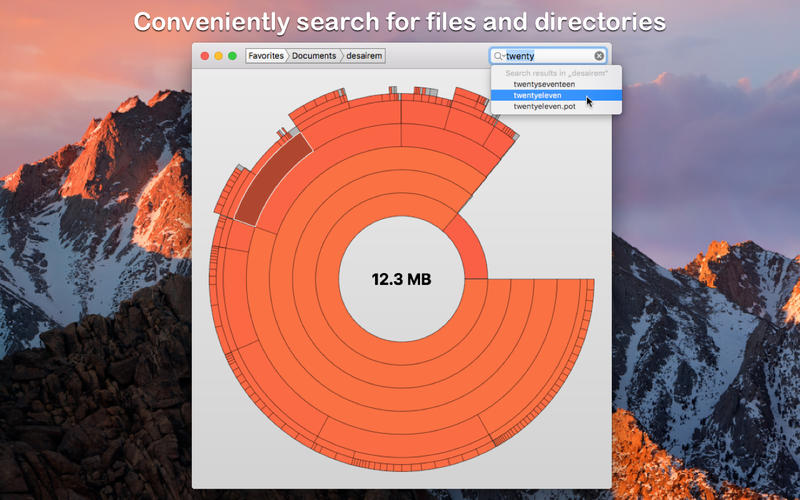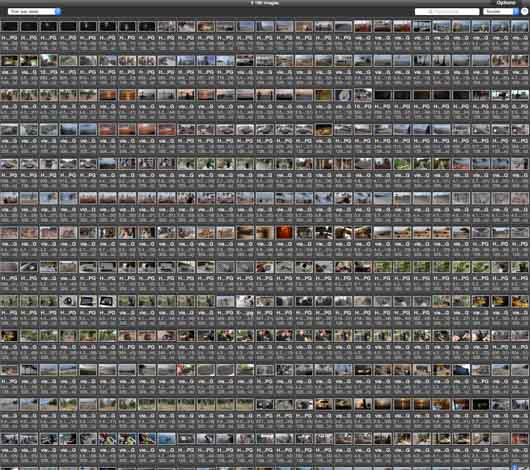The creation of 'virtual volumes'
Tri-CATALOG can analyze the content of any volume (disk, partition, CD, DVD, USB key, etc.) or folder. It creates a 'virtual volume' containing the list of files and folders in the hierarchical organization, and the views of all the images (as thumbnails).
You can create an unlimited number of 'virtual volumes'. These 'virtual volumes' remain accessible at all times, even if the original disk is no longer available.

So you can keep all the content you want in your database while using only a limited space.
Note: Options are provided to limit the images for which a thumbnail is created and set the thumbnail size.

Browse the 'virtual volumes'
Tri-CATALOG 5.04 is a utility to catalog files on removable storage. No word on what has changed. No word on what has changed. SwapTop 1.4 is a utility to download daily desktop pictures. Tri-CATALOG use as image server From the browser window showing a volume, you can directly use the images, whether they are on your hard drive or server, make a copy or drag and drop to other applications (mail software, website editor, etc.). All the images are directly accessible and usable for your work or creation. Use Tri-CATALOG in.
All 'virtual volumes' that you have created are available at any time, even if the original disk is no longer available. You can browse their contents, view images and read the information (file attributes, EXIF and IPTC data of images, etc.).
The main window displays a list of all volumes analyzed (left), the contents of the selected volume and images.
An image can be displayed in large in the browser (with the maximum size of the thumbnail stored in the 'virtual volume') or even full screen if the original image is available.
Search the 'virtual volumes'
If you need to find an image or file, search in the data base on some or all of the volumes saved.
Tri-CATALOG can show you the pictures you want to retrieve, and will tell you where and in what device the original item is saved.

Research can be done on the images of a particular volume, using the name as well as file attributes (date, size, etc.) and shooting attributes (exposure, aperture, focal length, sensitivity, etc..) by selecting the desired values in the panel of research. Only images that match the selected criteria are displayed:
A multi-criteria search is also possible on the entire data base or selected volumes.
Share the 'virtual volumes'
For each volume, there is a file 'virtual volume' created in the database.
The analysis of a disk (or folder) by Tri-CATALOG creates a 'virtual volume' in the database:
You can share volumes with other users or other machines, so they can see your pictures and photos (as thumbnails) and the list of files contained in the original volume (but they will not access the real pictures and files).
This is an easy way to share or send your images to others.
You can yourself see the 'virtual volumes' created by other users, but you can not share these volumes or edit them.
Share volumes by sending 'virtual volumes': You can send a 'virtual volume' by e-mail, or by copying across a network, a USB key, etc.. The recipient will just need to have a version of Tri-CATALOG 7 (including the free version 'Free Reader'), and copy the 'virtual volume' in its local database to view the images and content of the volume you send.
Note: The recipient will onlyhave the thumbnails and the list of contents, but not the original files, nor the real images.

Share volumes with the sharing features: Tri-CATALOG offers several ways to share volumes of the database, in addition to that described in the preceding paragraph. You can use DropBox, iCloud, a FTP server or a remote server over a LAN to share volumes.
You choose which volumes you want to share and by what means. The transfer is then automatic.
Tri-CATALOG use as image server
From the browser window showing a volume, you can directly use the images, whether they are on your hard drive or server, make a copy or drag and drop to other applications (mail software, website editor, etc..).
All the images are directly accessible and usable for your work or creation.
Tri-catalog Torrent
For example, you can easily add an image in an email (without needing the original):
Use Tri-CATALOG in READER mde
Tri-CATALOG can be used in consultation only (Reader). All volumes are available from the data base with the display and research functions, but the user can not modify the data base.
A 'READER Free' mode allows you to use Tri-CATALOG free (without needing a license) to view a single volume (created by a registered version of Tri-CATALOG). This makes it easy to send a 'virtual volume' to another person who can easily visualize your images.
Import old database Tri-CATALOG (4, 5 or 6)
Tri-CATALOG 7 can convert and import volumes analyzed with older versions (since version 4). You can then use directly all the work already done with an older version.
Note that with older versions, there were less recognized image formats, read less data (EXIF / IPTC, etc..) and thumbnail quality was lower. It is advisable to reanalyze these volumes.
Main Features
- Analysis of any volume or folder, with unlimited size or number.
- Keeps thumbnails of images, Exif and IPTC data.
- Drag and drop to other applications.
- Export thumbnails.
- Reader mode (view only).
Minimal Configuration
Tri-catalog
Macintosh with Intel processor
Mac OS X 10.6 or more
| WELCOME TO THE ONLINE CATALOG |
Tri-catalog Review
Jump to the 2020-2021 UNDERGRADUATE CATALOGJump to the2020-2021 GRADUATE CATALOG
The Catalog is the official source of the university's academic programs, courses, policies, and procedures. The catalog should be used as a guide, in conjunction with your academic advisor, in planning a course of study and in meeting requirements for graduation. See the table of contents and index for an overview of the information provided.
2002 or Later Graduate Catalogs
Visit the Archived Catalogs page.
2000 or Later Undergraduate Catalogs
Visit the Archived Catalogs page.
This publication is neither a contract nor an offer to make a contract. While every effort has been made to ensure the accuracy of the information in this publication, the University reserves the right to make changes at any time with respect to course offerings, degree requirements, services provided, or any other subject addressed in this publication. The information in this publication is provided solely for the convenience of the reader, and the University expressly disclaims any liability which may otherwise be incurred.
The University reserves the right to amend its rules and regulations within the limits commonly accepted by colleges and universities. Students must keep themselves informed of amendments.
Degree candidates are responsible for meeting university graduation requirements stated in the Cleveland State University Catalog for the academic year in which they are admitted to Cleveland State University. These graduation requirements are known as catalog rights. Colleges reserve the right to alter the content of courses, add and delete courses, and change required curricula. It is the student's responsibility to remain informed about such changes through regular interaction with their adviser in monitoring progress towards graduation. No university official can relieve students of this responsibility.
Students who interrupt their enrollment in the university for one full academic year or longer, consecutively, including summer, must meet the university graduation requirements of the catalog in effect when they return.
In all instances, students who return to Cleveland State University after enrolling at another college or university (except with transient or cross-registration permission) must follow the university graduation requirements of the catalog in effect at the time of their readmission.
